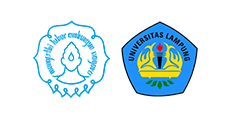Implementation of Scratch Application to Improve Learning Outcomes and Student Motivation on Basic Programming Subjects
Abstract
This study aims to improve learning outcomes and student motivation on Basic Programming Learning by utilizing the Scratch application. Research begins with identifying problems that occur in the classroom. Then designed an action to overcome it in an action cycle. In this study giving of the action takes place in two cycles. Each cycle consists of planning, implementation, observation, and reflection. In cycle 1, learning is implemented using problem-based learning model, while in cycle 2 using project-based learning. The technique of data collection is done through comprehension test, observation of learning activity, assignment of portfolio, and interview to students and related teacher. Data analysis was done using quantitative and qualitative interactive analysis techniques. The results showed that the use of Scratch application can improve learning outcomes and student motivation. This is indicated by the percentage of the student’s learning outcomes completeness by 25.7% in pre-cycle, 71.4% in cycle 1, and 94.3% in cycle 2. While the percentage of student motivation is 40.3% in pre-cycle, 75.1% in cycle 1, and 83.9% on cycle 2.
Full Text:
PDFReferences
Fikriyah, M., dkk. (2015). Model Pembelajaran Berbasis Proyek (Project Based Learning) Disertai Media Audio-Visual dalam Pembelajaran Fisika di SMAN 4 Jember. Jurnal Pembelajaran Fisika, 4(2), 181-186.
Kadir, A. & Putra, A. K. (2015). Bermain Program dan Robot Menggunakan Scratch. Yogyakarta: Andi.
Koorsse, M., Cilliers, C., & Calitz, A. (2014) Programming Assitance Tools to Support the Learning of IT Programming in South African Secondary Schools. Computers & Education, 82, 162-178.
Made, W. (2009). Strategi Pembelajaran Inovatif Kontemporer: Suatu Tinjauan Konseptual Operasional. Jakarta: Bumi Aksara
Malan, D. & Leitner, H. (2007). Scratch for Budding Computer Scientists. In Proceedings of the 38th SIGCSE Technical Symposium on Computer Science Education (SIGCSE’07), 223-227.
Nofitasari, A., Yuana, R. A., Maryono, D. (2016). The Use of Robomind Application in Problem Based Learning Model to Enhance Student's Understanding in the Conceptual Programming Algorithm. Indonesian Journal of Informatics Education, 1(1), 1-10.
Ouahbi, I., et al. (2015). Learning Basic Programming Concepts By Creating Games With Scratch Programming Environment. Procedia – Social and Behavioral Sciences, 191, 1479-1482.
Pebruanti, L. (2015). Peningkatan Motivasi dan Hasil Belajar pada Mata Pelajaran Pemrograman Dasar Menggunakan Modul di SMKN 2 Sumbawa. Jurnal Pendidikan Vokasi, 5 (3), 365-376.
Ratnawulan, E. & Rusdiana, H.A. (2014). Evaluasi Pembelajaran. Bandung: Pustaka Setia
Rumini, S., dkk. (2007). Psikologi Pendidikan. Yogyakarta: UNY Press.
Sardiman, A.M. (2014) Interaksi dan Motivasi Belajar-Mengajar. Jakarta: Rajawali Pers.
Sitaresmi, K. S., dkk. (2017) Penerapan PembelajaranProject Based Learning (PjBL) Untuk Meningkatkan Aktivitas dan Prestasi Belajar Siswa pada Materi Sistem Periodik Unsur (SPU) Kelas X MIA 1 SMA Negeri 1 Teras Boyolali Tahun Pelajaran 2015/2016. Jurnal Pendidikan Kimia, 6(1), 54-61.
Tanujaya, B. & Mumu, J. (2016). Penelitian Tindakan Kelas: Panduan Belajar, Mengajar, dan Meneliti.Yogyakarta: Media Akademi
Uno, H. B. (2016). Teori Motivasi dan Pengukurannya: analisis dibidang pendidikan. Jakarta: Bumi Aksara.
Refbacks
- There are currently no refbacks.






